The Nintendo Switch OLED is the latest device to join the Nintendo Switch family of handheld games consoles. But should you pay extra for the shiny new Nintendo Switch OLED or go for the regular Nintendo Switch instead? That’s what this guide will help you to figure out.
The original Nintendo Switch was released in 2017. It’s a hybrid gaming console, which means you can hold it in your hands to play wherever you are or hook it up to a TV or monitor and use it like a regular games console.
But these aren’t the only two options. The Switch Lite also launched a few years later in 2019. The difference between the regular Switch and the Switch Lite is that the latter has non-removable controllers. So you can only use it as a handheld device. For some people keen on the hybrid design of the original Switch, this will be a deal-breaker. For those interested only in playing remotely or playing handheld games, it might be a cheaper option.
In 2019, Nintendo also released a refreshed version of the original Nintendo Switch as well, which boasted an improved battery life.
But the Nintendo Switch OLED is now the most exciting upgrade to this handheld series. That’s because this newest version of the Switch has an OLED screen, which is similar to the displays you’ll find in many of the top smartphones these days, like the Samsung Galaxy S21 .
In this guide, we’ll look at why the Switch OLED is a better option than the original LCD version, and the other upgrades you get if you choose the Nintendo Switch OLED. But that doesn’t necessarily mean the original Switch isn’t right for you. Read on to find out.
Nintendo Switch OLED vs Nintendo Switch: price
The Nintendo Switch OLED costs $350 / £309 / AU$539, and was released on October 8, 2021. That's $50 / £30 / AU$90 more than the original Switch was priced at, which cost $300 / £279 / AU$449.
Nintendo Switch OLED vs Nintendo Switch: design
The Nintendo Switch OLED looks similar to the original Switch after its 2019 refresh. It has removable Joy-Cons, the same button layout, and even comes in the familiar bright Neon Blue and Red color scheme.
However, the version you might have seen the most online around the release of the Switch OLED is the new White version. This more sedate, grown-up color scheme is the sort of garb we expected to see from the rumored Nintendo Switch Pro . the Switch OLED may not be the Switch Pro, but this is the closest we'll get for now, and many of the leaks believed to point to the Pro are found in this redesign.
There are some other important design changes here. The thick bezels of the original Switch's display have been significantly trimmed down, and the 6.2-inch LCD panel has been replaced with a vibrant 7-inch OLED panel.
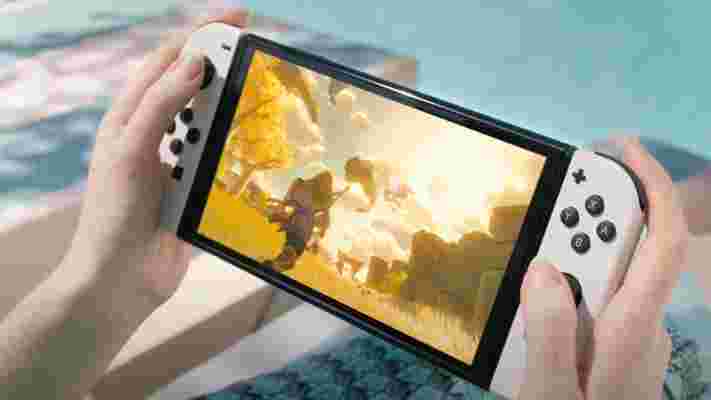
This gives the new Switch a less dated appearance and means there's no significant difference in size with the new model, despite the use of a larger screen. It's 0.1 inches longer, at 9.5 x 0.55 x 4 inches (W x D x H).
This means that any Joy-Con controllers you bought work just fine with the Nintendo Switch OLED. The new console uses the same 'rail' system for such accessories.
Nintendo has reworked the Switch's feeble kickstand to make it much less fragile, too. It now runs across much of the console's back, which we found keeps it upright more securely. The stand is also adjustable as well, allowing for different display angles when playing in tabletop mode.
You wouldn't know it from a glance but Nintendo has also redesigned the Switch OLED's speakers. They still sit on the bottom of the handheld, one to each side, and offer enhanced audio over the original speakers. They're far punchier and more impactful and don't distort at maximum volume.
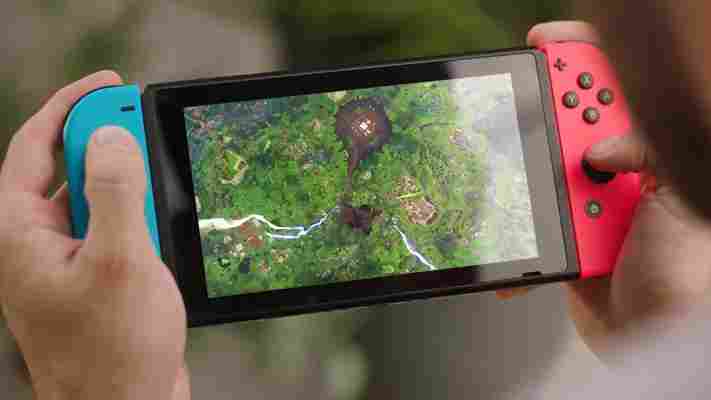
As before, the OLED Switch comes with a dock, to let you play games on your TV. However, it does not offer the 4K output many hoped for in a Nintendo Switch Pro console. Playing docked and 1080p remains the max output resolution, and the display is 720p when playing in handheld mode.
An Ethernet (LAN) port is the extra we do get. You take a cable from your home internet router and plug it into the dock, for a more reliable signal than you'd see from the Switch's own Wi-Fi connection.
Nintendo has also doubled the internal storage in the Switch OLED, from 32GB to 64GB. You also have the option of adding a microSD card if you need more room.
Battery life remains the same as the refreshed Nintendo Switch at 4.5 to nine hours. This is better than the launch Switch's 2.5 to 6.5 hours, but the OLED Switch brings no real improvement in this area.
It's worth mentioning there are a number of accessories you can get to upgrade your experience with all versions of the Nintendo Switch console, but we particularly like the ZenGrip Pro OLED . This adds handles to the console while it is in handheld mode, making it easier and more comfortable to hold since it is otherwise completely flat.
Nintendo Switch OLED vs Nintendo Switch: display
Here's the interesting part. The new Nintendo Switch has an OLED screen.
These display panels have emissive pixels, which means black parts of the screen image will look perfectly inky black even if you play under the covers in perfect darkness.
With a standard Nintendo Switch, blacks end up looking slightly gray in these conditions. The OLED Switch is much better for bed-time gaming than the old model, and helps Nintendo's already colorful art style stand out even more.
This is also the largest screen put into a Switch console yet. It measures 7 inches across, up from the 6.2 inches of the original Nintendo Switch design and the 5.5 inches of the Switch Lite.
There is no change in resolution. The Nintendo Switch OLED remains a 1280 x 720 pixel display. Many had hoped for a bump to 1080p (and there was even rumors of a 4K offering) in this "next generation" design.
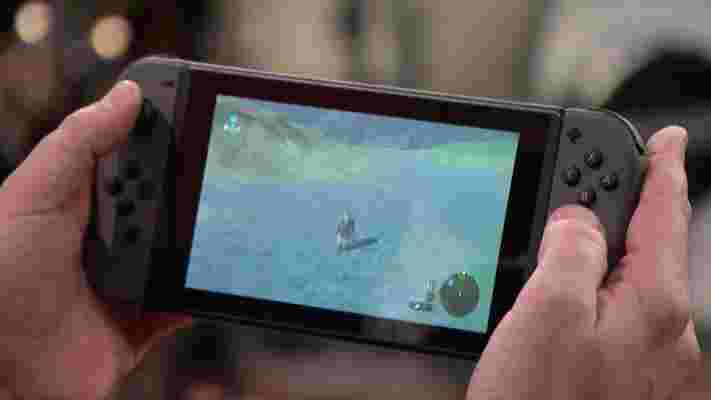
We also have some concerns about this display panel. In March, we reported Nintendo was planning to use Samsung Display panels for a refreshed version of the Switch.
Almost all Samsung OLED panels use a display technology called PenTile. This is where the display pixels share sub-pixels, the tiny red, green and blue pin pricks of light that make up each color.
PenTile panels offer reduced sharpness compared to LCD panels of the same resolution thanks to the sharing of sub-pixels, usually exhibiting as a slight fizziness to text and other high contrast objects.
Samsung has made plenty of non-PenTile RGB OLED displays in the past. It used them in its long-discontinued OLED TVs, and in a few phones in the 2011-2012 era under the Super AMOLED Plus banner.
Samsung's RGB OLEDs have pretty much disappeared in the intervening years. But since then its use of PenTile OLEDs has never seemed a big deal as most OLED devices these days have exceptionally high pixel density, so a slight relative loss in sharpness is largely imperceptible.
Nintendo Switch OLED vs Nintendo Switch: power
While the OLED screen of the new Switch makes games look richer, bolder and more immersive than before, the console doesn't boost performance in any way.
The Switch OLED has the same Nvidia Custom Tegra processor and RAM as the current Switch, which means there is no upgrade in power under the hood.
That means it won't unlock any new potential for developers to bring more comprehensive games to the new console.
What it does mean though, is the Switch OLED will be able to play all the same games as the Switch - and vice versa.
If you were hoping for a Nintendo Switch Pro with a 1080p screen and 4K output to your living room TV, the Nintendo Switch OLED isn't going to meet that demand.
Games will feel the same, but they do at least look prettier when playing in handheld mode and tabletop mode. The Ethernet port on the dock is welcome, as is the increase in storage to 64GB, but the Nintendo Switch OLED is certainly an evolution not a revolution.
The Canon EOS R5 C is a super-sized EOS R5 with cooling for unlimited 8K video
If the Canon EOS R5 's video skills are too restrictive for your filmmaking needs, Canon has just given you a Cinema-flavored alternative called the Canon EOS R5 C.
A video-focused twist on the photography-focused EOS R5, the full-frame EOS R5 C effectively trades the latter's in-body image stabilization (IBIS) for a fan-powered cooling system that gives it virtually limitless 8K video shooting powers. Well, at least until your battery dies or your memory card fills up.
Unusually, the Canon EOS R5 C also features completely separate stills and video modes. While you're in 'photo' mode you can't shoot video at all – and vice versa. Instead, when switching between the two, the camera shuts down and reboots into your chosen stills or photo mode.
While this means the EOS R5 C isn't a true hybrid camera for those who want to quickly shoot a mixture of stills and video, it does make it a more powerful filmmaking tool than the EOS R5. Those cooling fans, in particular, solve the overheating criticisms leveled at the EOS R5, with the R5 C capable of shooting 8K/25p raw video internally for 50 minutes, or 4K/50p video for 35-40 minutes.
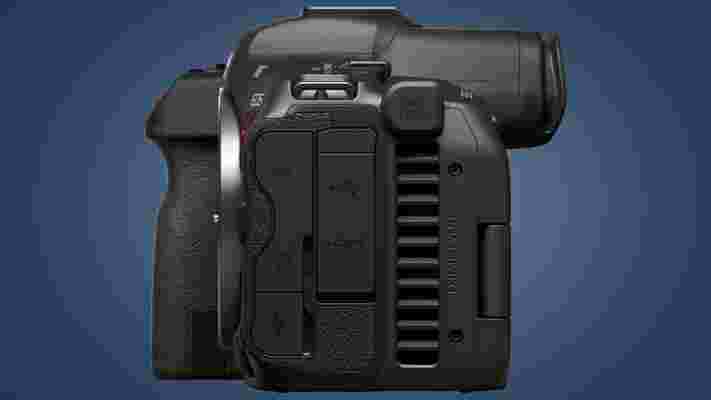
Feed the camera a 512GB CFexpress Type B card (the other slot is only for standard SD cards), and you'll be able to go for longer in formats like Cinema Raw Light, a compressed format that gives over an hour of recording from a charge. The EOS R5 C can even shoot 8K/60p video – although unlike the Nikon Z9 , this will only be possible when it's hooked up to an external power source.
Despite the EOS R5 C's strong video focus (it is a Cinema EOS camera, after all), it does also have quite a lot in common with the EOS R5. Both cameras have the same RF lens mount, 45MP CMOS sensor, 5.76-million dot electronic viewfinder, and 3.2-inch rear touchscreen. The two mirrorless powerhouses also both have a Digic X processor, although Canon says these are tailored slightly for each camera.
This means that, unlike the EOS R5, the EOS R5 C's autofocus modes vary depending on whether you're shooting stills or video. In photo mode, you get the usual Dual Pixel CMOS AF II (complete with features like animal-tracking), but in video mode this switches to the standard Dual Pixel CMOS AF (the same experience as on the Canon EOS C70). This mode lacks the ability to track animals or motorsports, though pro filmmakers are unlikely to rely on autofocus in these situations anyway.
While the EOS R5 C does gain the useful Multi-Function shoe seen on the Canon EOS R3 – which gives it two-way data transfer with accessories like microphones and Speedlites – it does, unlike the EOS R5, lack in-body image stabilization. This is likely a dealbreaker for stills-focused creators, but filmmakers will most likely use their own stabilization, like a gimbal or monopod, with the EOS R5 C, so it's less of an issue for them.
The Canon EOS R5 C will be available in March for $4,499 / £4,499 / AU$7,499, which puts it in between the Canon EOS R5 (which launched for $3,899 / £4,199 / AU$6,899) and the Canon EOS C70 ($5,499 / £4,799 / AU$8,149). How much stock of the EOS R5 C will be available, though, remains to be seen – the recent Canon EOS R3 sold out very quickly, with Canon forecasting a wait up to six months for that camera back in December.
Analysis: a video powerhouse that's more Sony FX3 than Sony A1
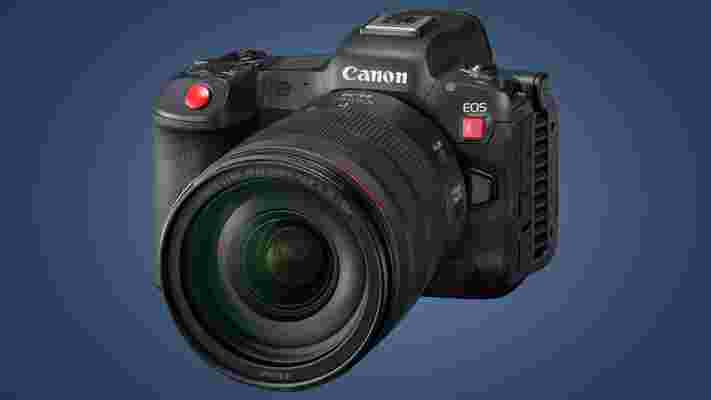
The Canon EOS R5 C is a powerful new option for filmmakers who need a small, 8K video tool that can shoot pro-quality footage with a side of stills. But it's more like Canon's answer to the Sony FX3 than a more mainstream all-rounder like the Sony A1 .
Like Sony, Canon is producing Cinema-branded versions of its full-frame mirrorless camera in order to attract pro video shooters who increasingly need to shoot mixed media. The Sony FX3, which can't shoot 8K video but does have in-body image stabilization, was Sony's Cinema-flavored take on the Sony A7S III , and the Canon EOS R5 C is a similar proposition for those frustrated by the EOS R5's video limitations.
What the EOS R5 C isn't, though, is a tool that can quickly shoot a mixture of videos and stills. Its rigid approach (you can't shoot video in its 'photo' mode, and vice versa) will likely put off some hybrid shooters, and it does come with a small but significant list of limitations: no full-size HDMI port, no built-in ND filters, standard Dual Pixel CMOS AF in video mode, and no option to charge the camera via an external Power Delivery battery while the camera is on or recording.
The latter restriction, alongside the fact that you can't hot-swap its LP-E6NH batteries while recording, could be annoying for those who mostly shoot lengthy interviews, but otherwise the EOS R5 C's recording powers are very impressive for such a small camera. Give it a sizable card and you'll get 40-50 minutes of video in most formats from a single charge, with no overheating breaks. The only issue is the sheer size of 8K video files, and the fact that the EOS R5 C only has one CFexpress slot, with the SD slot only capable of swallowing 4K footage.
Photographers will still likely want to go for the Canon EOS R5, thanks to its impressive in-body image stabilization and smaller body. But for videographers who to need to occasionally shoot high-quality stills, the EOS R5 C could be a tempting new option – particularly as it isn't much more expensive than its sibling.
iPhone SE 3 release date is likely to be in March or April
We’ve been waiting a long time for the iPhone SE 3 , with the iPhone SE (2020) having launched all the way back in April 2020. But it looks like the next model might be about to land, as a reputable source claims it will probably be announced this March or April.
The source in question is Mark Gurman – a journalist with a great track record for Apple leaks. He said as much in the latest Power On newsletter for Bloomberg, adding that the iPhone SE 3 is likely to have 5G and new internals, but a similar design to the old model – meaning the Touch ID fingerprint scanner and home button probably aren’t going anywhere.
While we’d take any single leak with a pinch of salt, this is all in line with what various other sources have said, with another recently claiming that the iPhone SE 3 would land by the end of March . So while we can’t be certain, we’d say March or April is looking very likely.
Gurman’s wording in this latest leak suggests that we might see things other than the iPhone SE 3 at this event too, but he doesn’t reveal what. He also notes that this will apparently be a virtual rather than in-person event.
Gurman also touches on Apple’s second event of 2022, which is likely to be WWDC in June, and this too will apparently be virtual. He says we’ll likely see iOS 16 , watchOS 9, macOS 13, and tvOS 16 there, but that was all expected anyway.
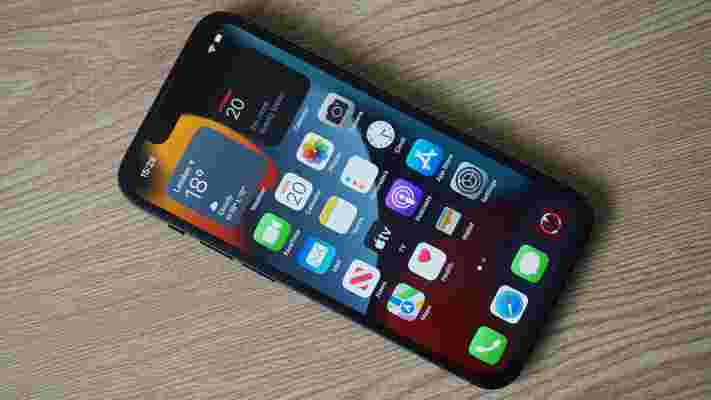
Opinion: the iPhone SE 3 could run where the iPhone 13 mini walked
While a lot of people are probably more excited about the iPhone 14 range in September, the iPhone SE 3 could be a big seller for Apple , and could show that there’s still a market for small phones – if they’re priced right.
Most evidence so far suggests that the iPhone 13 mini hasn’t been a huge seller for Apple, but the iPhone SE 3 could offer an even smaller screen at a much lower price, and pair that with 5G (for the first time in a mid-range iPhone), which might make for an intoxicating combination.
That remains to be seen, and the increasingly dated design that we’re expecting might hold it back, but there’s a good chance that a palatable price is all people really need to embrace smaller phones again – and the iPhone SE 3 is likely to offer that.